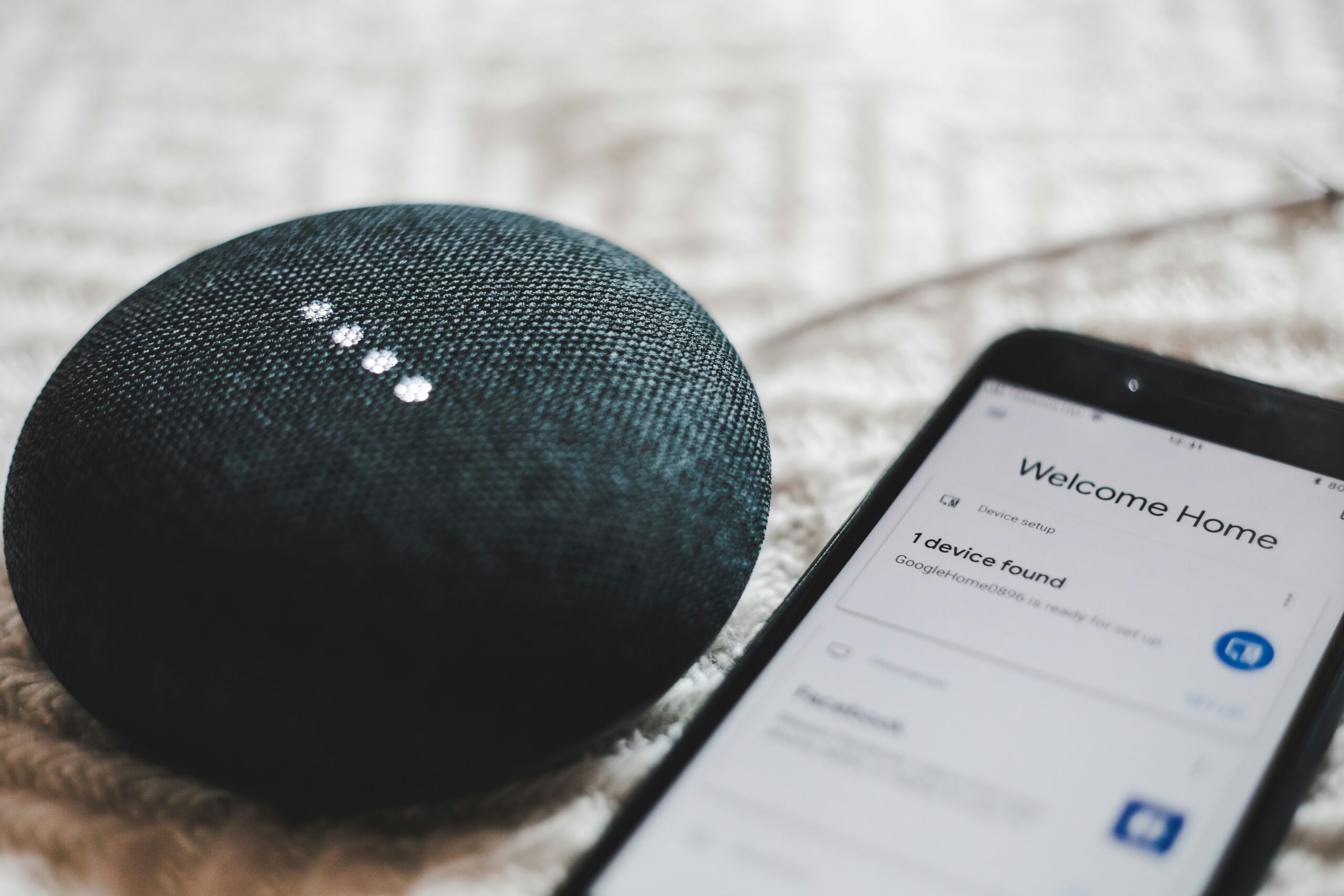Imagine having the convenience of a Wi-Fi-enabled thermostat in your home, allowing you to control the temperature from anywhere with just a few taps on your smartphone. Now, imagine a power outage, leaving you without electricity and wondering if your beloved thermostat can still function. The question arises: can a home power backup system be used with a Wi-Fi-enabled thermostat? In this article, we will explore the compatibility of these two technologies and whether you can rely on your thermostat even when the power goes out.

Overview of Home Power Backup System
Definition and function of home power backup systems
A home power backup system is a device or system that provides electricity to a residential property during a power outage. It acts as a backup power source, ensuring that essential appliances and systems continue to function even when the main electrical grid is down. The primary function of a home power backup system is to provide uninterrupted power supply and maintain the comfort and functionality of a home during emergencies.
Various types of home power backup systems
There are several types of home power backup systems available in the market. The most common ones include:
-
Standby Generators: These generators are permanently installed outside the home and automatically switch on when the main power supply fails. They are powered by natural gas or propane and can provide a continuous source of electricity for an extended period.
-
Portable Generators: Portable generators are versatile and can be moved around as needed. They run on gasoline or propane and need to be manually started during a power outage.
-
Solar Power Systems: Solar power backup systems utilize solar panels to convert sunlight into electricity. This renewable energy source can be stored in batteries and used as a backup power supply during blackouts.
-
Battery-Based Backup Systems: These systems use batteries powered by electricity from the grid or solar energy. The batteries are charged when electricity is available and provide power when the main supply is interrupted.
Requirement of energy for typical home power backup systems
The energy requirement for a typical home power backup system depends on the size of the property and the number of appliances that need to be powered during an outage. On average, a backup power system for a residential property may require anywhere between 5,000 to 20,000 watts of electricity. This estimation includes essential appliances like refrigerators, lights, heating systems, and other electrical devices necessary for everyday living.
Benefits of using a home power backup system
Using a home power backup system offers several benefits. The most significant advantages include:
-
Continuity of Operations: During a power outage, a home power backup system ensures that essential systems and appliances continue to function. This includes heating or cooling systems, medical equipment, security systems, and communication devices.
-
Increased Safety and Security: With a backup power supply, you can maintain lighting throughout your home, reducing the risk of accidents and allowing you to move around safely during an outage. It also ensures that security systems and alarms remain operational, providing peace of mind.
-
Convenience and Comfort: A home power backup system allows you to continue using essential appliances like refrigerators, cooking equipment, and entertainment devices, making daily life more comfortable even during extended power outages.
-
Protection of Sensitive Electronics: Uninterrupted power supply from a backup system prevents sudden power surges, ensuring the safety of sensitive electronics and preventing damage due to fluctuations in voltage.
-
Increased Property Value: Installing a home power backup system can increase the value of your property, as it is seen as a desirable feature for homebuyers who prioritize reliability and functionality.
Understanding Wi-Fi-Enabled Thermostats
Introduction to Wi-Fi-enabled thermostats
Wi-Fi-enabled thermostats are advanced thermostat systems that are connected to the internet via a Wi-Fi network. They allow homeowners to control the temperature and settings of their heating, ventilation, and air conditioning (HVAC) systems remotely through smartphone applications or web portals.
Working principle of Wi-Fi-enabled thermostats
Wi-Fi-enabled thermostats utilize sensors to detect temperature changes in the environment and adjust the HVAC system accordingly. These thermostats connect to the Wi-Fi network in your home, enabling you to control and monitor temperature settings from anywhere.
Advantages of using Wi-Fi-enabled thermostats
Utilizing a Wi-Fi-enabled thermostat offers several benefits, including:
-
Remote Control and Accessibility: With a Wi-Fi-enabled thermostat, you can adjust temperature settings and control your HVAC system from anywhere, using your smartphone or any other internet-connected device. This allows you to optimize energy usage and maintain a comfortable environment in your home.
-
Energy Efficiency: Wi-Fi-enabled thermostats offer advanced features such as programmable schedules and learning capabilities. They can analyze your usage patterns and automatically adjust temperature settings for maximum energy efficiency, resulting in potential energy savings.
-
Real-Time Monitoring: Wi-Fi-enabled thermostats provide real-time data and feedback on the temperature and humidity levels in your home. This allows you to monitor and optimize energy usage, identify potential issues, and make adjustments accordingly.
-
Integration with Smart Home Systems: These thermostats can be seamlessly integrated into existing smart home systems, allowing for centralized control and automation of various devices and appliances. This integration enhances the overall energy management and convenience of your home.
Impact of Wi-Fi-enabled thermostats on energy consumption
Wi-Fi-enabled thermostats have a significant impact on energy consumption in residential properties. By providing remote control and advanced energy management features, these thermostats enable homeowners to optimize their heating and cooling systems, resulting in reduced energy usage. Studies have shown that utilizing Wi-Fi-enabled thermostats can lead to energy savings of up to 15%, depending on individual usage patterns and the efficiency of the HVAC system.
Energy Demand of Wi-Fi-Enabled Thermostats
Energy consumption of Wi-Fi-enabled thermostats
Wi-Fi-enabled thermostats are designed to be energy-efficient, as they are typically connected to a low-voltage power supply. The energy consumption of these thermostats is relatively minimal, with an average power usage ranging from 0.5 watts to 3 watts when actively connected to a Wi-Fi network.
Factors affecting the energy usage of Wi-Fi-enabled thermostats
Several factors can influence the energy usage of Wi-Fi-enabled thermostats, including:
-
Wi-Fi Connectivity: The strength and stability of the Wi-Fi network can impact the energy consumption of the thermostat. Weak connections or constant reconnection attempts can increase power usage.
-
Device Features and Configuration: Certain features of Wi-Fi-enabled thermostats, such as the display backlight, constant data synchronization, or additional sensors, can consume more power. Adjusting the settings and optimizing the device configuration can help manage energy usage.
-
Usage Patterns: The frequency of remote control and adjustments made through the smartphone application can affect the energy consumption of the thermostat. Continuous monitoring and frequent changes may result in slightly higher power usage.
Comparison of energy usage with traditional thermostats
Compared to traditional thermostats, Wi-Fi-enabled thermostats generally have a slightly higher energy consumption due to the added functionality and connectivity. However, the overall impact on energy consumption is minimal, especially when considering the energy savings achieved through optimized control and scheduling of the HVAC system. The benefits of increased energy efficiency usually outweigh the minimal increase in energy consumption.
Compatibility of Home Power Backup Systems with Wi-Fi-Enabled Thermostats
Determining factors for compatibility
Ensuring compatibility between a home power backup system and a Wi-Fi-enabled thermostat involves considering the following factors:
-
Power Capacity: The backup system should have sufficient power capacity to support the electrical demand of both the thermostat and other essential appliances during a power outage.
-
Power Quality: The backup system should provide stable and clean power to prevent any disruptions or damage to the Wi-Fi-enabled thermostat.
-
Automatic Transfer Switch: The backup system should be equipped with an automatic transfer switch that seamlessly transitions power supply from the main grid to the backup system during an outage, ensuring uninterrupted operation of the thermostat.
Typical power requirements of Wi-Fi-enabled thermostats
The power requirements of Wi-Fi-enabled thermostats vary depending on the model and features. However, most thermostats operate on low-voltage power supplies, typically ranging from 24 volts to 30 volts. The power consumption is relatively low, generally within the range of 0.5 watts to 3 watts when actively connected to the Wi-Fi network.
Assessing the potential of home power backup systems to power Wi-Fi-enabled thermostats
Home power backup systems can generally support the power requirements of Wi-Fi-enabled thermostats without any issues, as the energy consumption of these thermostats is relatively minimal. The backup systems’ power capacity and stability are well-suited to the low-voltage power supply needs of the thermostats, ensuring that they can continue to function seamlessly during a power outage.

Back-up Power Options for Wi-Fi-Enabled Thermostats
Using a generator for backup power
One of the primary and most reliable options for providing backup power to Wi-Fi-enabled thermostats is by using a generator. Standby generators and portable generators can both be suitable options, depending on the specific needs and preferences of the homeowner.
Standby generators are permanently installed outside the home and automatically switch on when a power outage occurs. They can provide a continuous source of electricity, ensuring uninterrupted power to the Wi-Fi-enabled thermostat and other essential appliances.
Portable generators, on the other hand, are versatile and can be easily moved around. They usually run on gasoline or propane and need to be manually started during a power outage. Portable generators are a more affordable option for homeowners who have smaller power requirements during outages.
Solar-powered backup options
Solar power systems can also be an excellent backup power option for Wi-Fi-enabled thermostats. These systems utilize solar panels to convert sunlight into electricity, which can be stored in batteries for use during power outages. Solar-powered backup systems provide a renewable and eco-friendly source of energy, reducing reliance on traditional generators or the electrical grid.
Battery-based backup systems
Battery-based backup systems, such as uninterruptible power supply (UPS) units, can also serve as an effective backup power solution for Wi-Fi-enabled thermostats. These systems utilize batteries to store energy and provide an uninterrupted power supply during outages. UPS units are commonly used for critical devices that require seamless power protection, and they can be easily integrated with Wi-Fi-enabled thermostats to ensure uninterrupted functionality.
Factors to Consider for Successful Integration
Assessing energy requirements
Before integrating a home power backup system with a Wi-Fi-enabled thermostat, it is crucial to assess the energy requirements of both the backup system and the thermostat. This includes understanding the power demands of all essential appliances and devices that need to be powered during an outage. An accurate assessment will help determine the appropriate power capacity and configuration of the backup system.
Understanding power limitations
It is essential to understand the power limitations of the chosen backup system. This includes its maximum power output, fuel or energy source limitations, and any other restrictions specified by the manufacturer. Adhering to these limitations ensures optimal performance and avoids any potential damage or malfunction.
Selecting the appropriate backup system
Selecting the right home power backup system for integration with a Wi-Fi-enabled thermostat depends on several factors, including power requirements, budget constraints, and personal preferences. Careful consideration should be given to the backup system’s capacity, fuel type, durability, and ease of installation and maintenance. Consulting with a professional or an experienced technician can help determine the most suitable option for a specific home setup.

Installation Process
Steps in installing a home power backup system
Installing a home power backup system generally involves the following steps:
-
System Evaluation: Assess the electrical needs of your home and determine the appropriate power capacity required for a backup system. Consider essential appliances that need power during an outage, including the Wi-Fi-enabled thermostat.
-
Equipment Selection: Choose the appropriate backup system based on your evaluation and requirements. Consider factors such as fuel type, power capacity, and compatibility with the Wi-Fi-enabled thermostat.
-
Professional Installation: Contact a licensed electrician or a qualified installer to ensure the safe and proper installation of the backup system. They will handle the electrical connections, permits, and compliance with local building codes.
-
Automatic Transfer Switch: Install an automatic transfer switch (ATS) to facilitate the seamless transition of power supply when a power outage occurs. The ATS will monitor the electrical grid and activate the backup system, ensuring uninterrupted power supply to the Wi-Fi-enabled thermostat.
Connecting the power backup system with the Wi-Fi-enabled thermostat
After installing the home power backup system, connecting it with the Wi-Fi-enabled thermostat typically involves the following steps:
-
Wi-Fi Setup: Connect the Wi-Fi-enabled thermostat to the home’s Wi-Fi network following the manufacturer’s instructions.
-
Set Up the App: Download the manufacturer’s app for the thermostat and follow the provided instructions to establish a connection with the thermostat.
-
Remote Control and Monitoring: Once the thermostat is connected to the Wi-Fi network and the app, you can remotely control and monitor temperature settings through the mobile application or web portal.
Safety precautions during installation
During the installation process, it is essential to prioritize safety. Here are a few safety precautions to consider:
-
Turn off the main electrical power supply before installing or working on any electrical connections.
-
Ensure that all electrical connections are properly insulated and secure to prevent any potential electrical hazards.
-
Follow the manufacturer’s instructions and guidelines while installing the backup system and connecting it with the Wi-Fi-enabled thermostat.
-
If you are unsure about any aspect of the installation process, consult with a licensed professional or technician to ensure safe and accurate installation.
Cost Implications
Cost of purchasing needed equipment
The cost of purchasing the necessary equipment for a home power backup system can vary significantly depending on factors such as power capacity, fuel type, and additional features. The cost of standby generators can range from a few thousand dollars to tens of thousands of dollars, depending on the specific requirements and power capacity. Portable generators are generally more affordable, with prices ranging from a few hundred to a few thousand dollars. Solar-powered systems and battery-based backup solutions also vary in cost, depending on the capacity and brand.
Installation costs
Installation costs for a home power backup system typically depend on the complexity of the setup and the specific requirements of the property. Hiring a licensed electrician or a professional installer is highly recommended to ensure the safe and proper installation of the system. Installation costs can range from a few hundred to a few thousand dollars, depending on the scope of work and any additional electrical upgrades required.
Maintenance and running costs
Home power backup systems require periodic maintenance to ensure optimal performance and reliability. This may include regular fueling or replenishing of energy sources, lubrication, filter replacements, and general inspections. The maintenance costs vary depending on the type and brand of the backup system. Additionally, running costs, such as fuel or energy consumption, should be considered as an ongoing expense.
Benefits of Utilizing Home Power Backup for Wi-Fi-Enabled Thermostats
Continued functionality during power outages
One of the most significant benefits of utilizing a home power backup system for a Wi-Fi-enabled thermostat is the continued functionality during power outages. With a backup power supply in place, the thermostat can continue to operate seamlessly, maintaining temperature settings and ensuring comfort even when the main electrical grid is down. This is especially beneficial during extreme weather conditions or prolonged power outages.
Potential cost savings
Integrating a home power backup system with a Wi-Fi-enabled thermostat can result in potential cost savings. By having an uninterrupted power supply during outages, energy-efficient temperature settings can be maintained, reducing overall energy consumption. This can lead to lower utility bills and potential long-term savings.
Increased lifespan of the thermostat
Using a home power backup system can help extend the lifespan of a Wi-Fi-enabled thermostat. Sudden power outages and voltage fluctuations can potentially damage the thermostat’s sensitive electronics. By providing a stable and clean power supply, the backup system protects the thermostat from these issues, ensuring its longevity and reliability.
Challenges and Limitations
Technical installation challenges
The installation of a home power backup system and its integration with a Wi-Fi-enabled thermostat can present technical challenges. Understanding the electrical requirements, ensuring proper wiring, and setting up the correct connections can be complex. It is recommended to consult with a professional installer or a licensed electrician to overcome these challenges and ensure a successful installation.
Potential compatibility issues
Compatibility between the home power backup system and the Wi-Fi-enabled thermostat can be a potential limitation. It is important to assess and ensure compatibility regarding power capacity, voltage requirements, and the presence of an automatic transfer switch. Different thermostat models may have specific compatibility requirements, and it is crucial to choose a backup system that meets those specifications to ensure seamless integration.
Maintenance requirements for the backup systems
Home power backup systems, like generators or solar-powered systems, require regular maintenance to ensure optimal performance and longevity. This includes fuel or energy source replenishment, oil changes, filter replacements, and general inspections. Failure to carry out the recommended maintenance can lead to malfunctions or reduced efficiency of the backup system. Homeowners should be aware of and follow the maintenance requirements specified by the manufacturer to ensure proper functioning during emergencies.
In conclusion, integrating a home power backup system with a Wi-Fi-enabled thermostat offers numerous benefits, including continued functionality during power outages, potential cost savings, and the increased lifespan of the thermostat. While there may be technical challenges and compatibility considerations, proper assessment, professional installation, and regular maintenance can help overcome them and ensure a successful integration. The ability to control and monitor temperature settings remotely and optimize energy usage make this combination a valuable addition to any home.

